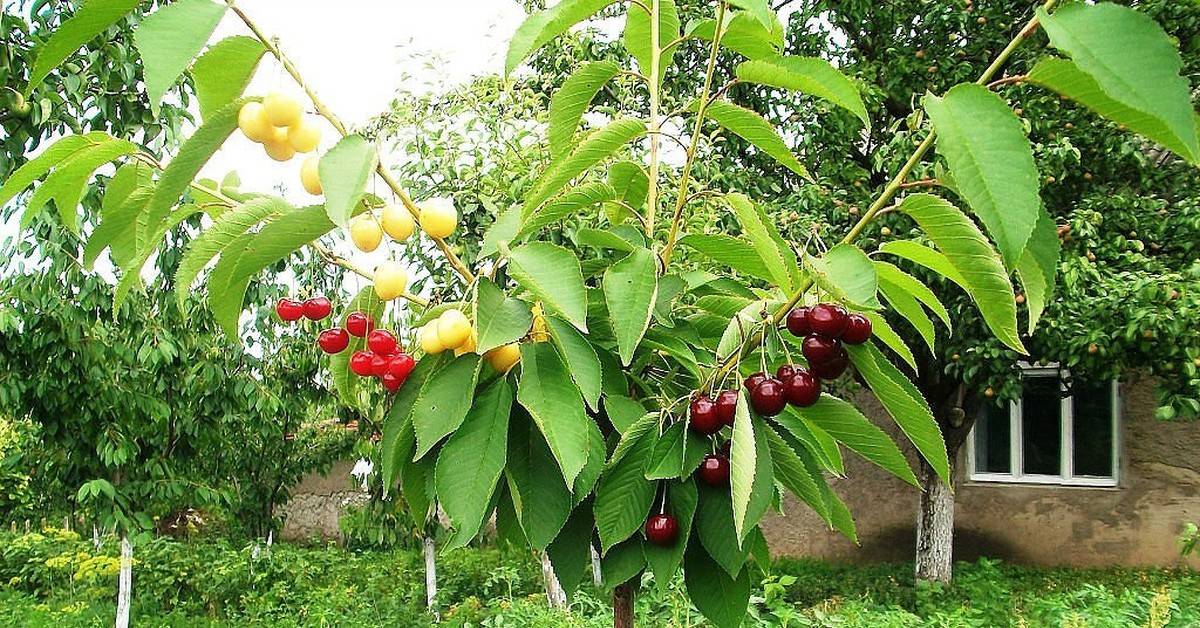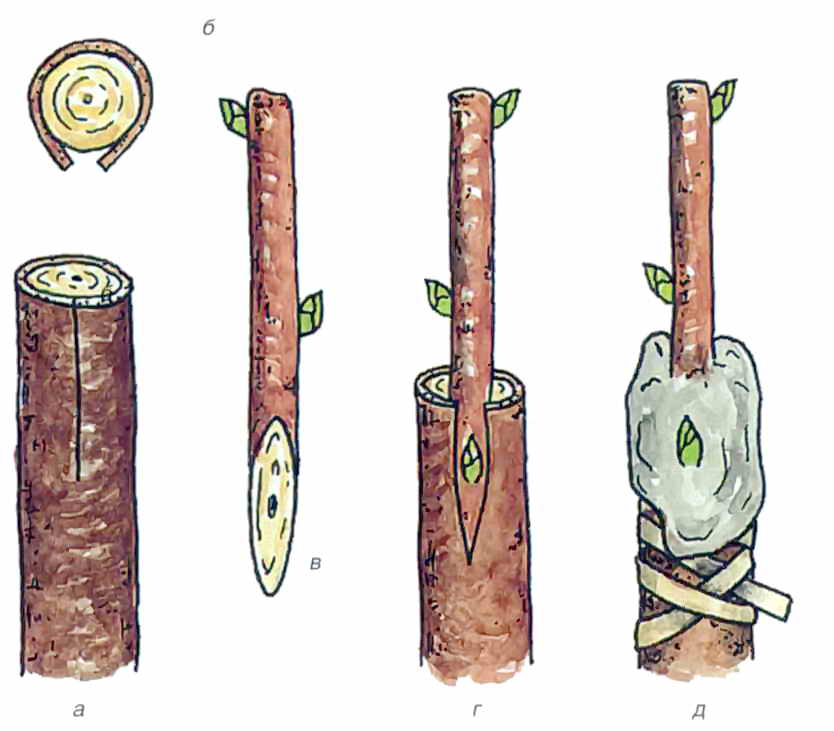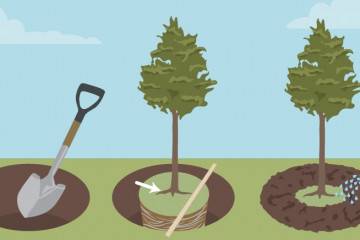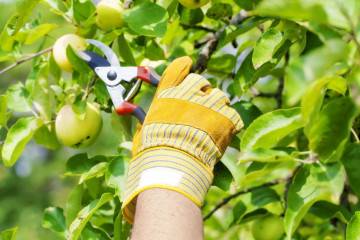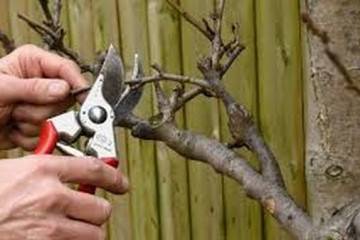Grafting trees in spring, ways of grafting fruit trees for beginners
Content:
Every gardener dreams that the fruit trees in the garden will delight with an abundance of tasty and healthy fruits. But, unfortunately, as practice often shows, cuttings purchased in dubious places do not always meet expectations. There is little pleasant in this, but you should not despair either, because with a reasonable approach, everything can be fixed. Grafting on strengthened tree trunks will help to solve the problem.
Grafting Trees: Tips for Beginner Gardeners
Grafting is a fun and interesting process, but in order to achieve good results, you need to know a lot of subtleties of implementation.
The most common mistake of novice gardeners is that they vaccinate on fruit crops of a variety that is incompatible with the stock. In this case, unfortunately, the tree will rapidly begin to fade, hurt and soon die.
What is grafting for fruit trees for?
Before figuring out how to plant trees, you need to understand what it is for and what its main tasks are.
Thanks to this procedure, it is possible to heal and / or rejuvenate a weak and aged plant (pear, apple, plum, etc.). In this case, the stalk shows the main advantageous features of its species.
What is a rootstock and a scion
Rootstock and scion are used for grafting new garden structures. In simpler and more understandable language, this is the implantation of the tissues of one tree into another.
The main tree on which grafting or grafting of the bud will be carried out is called the rootstock. It follows that the shoot and bud of another fruit culture are called scion.
Experienced gardeners strongly recommend that you study the characteristics and properties of plants before the procedure. It is impossible to simply take and combine two cultures at will. It is important that a family bond exists between them, otherwise both cultures will perish.
Even nursery staff do not have absolutely accurate information about compatibility, but it is considered to be successful inoculation when different varietal species are grafted onto one type of plant. This means that different varieties of apples can be grafted onto the apple stock.
How to choose a stock
The rootstock stalk is selected so that it is compatible with the species and plant variety being grafted. It is important to fully realize that this is the foundation of the future fruit culture. Not only the development of plants, but also fruiting, the palatability of fruits depends on the correctly chosen stock.
In its role, you can use a broken small tree, which has not yet had time to lose its vitality, or a wild representative of the species, a stump with a well-developed root system.
How to choose a scion
The main rule for choosing a scion is its compliance with varietal qualities and indicators such as resistance to diseases, frost resistance and abundant fruiting.
As a scion, experienced agronomists recommend using varieties that correspond to the growing regions. If you have experience in preparing cuttings, you can harvest it yourself.
Preparation of the cutting and the necessary tools and materials for grafting
The right time to prepare cuttings is mid-autumn - late winter. Most often, gardeners make an autumn harvest by cutting off a strong, suitable shoot soon after the leaves fall from the tree. This is due to the fact that during this period the culture slows down sap flow and enters a phase of complete rest, natural disinfection from pathogenic microflora is observed.
The shoot should be at least 3-7 years old, the length is not more than 0.4 m, and the diameter is 0.05-0.07 m. There must be at least 4 developed growth buds on the sprout, and the interval between the nodes is small.
If the gardener did not have time to make the preparations in the fall, you can cut the shoots in early spring. The most suitable period for this is March and April, depending on weather conditions. Summer grafting of fruit trees with green cuttings also provides good results.
To carry out an agrotechnical event, you must first prepare the tools. You cannot do without a sharp knife or a pruning shears of the appropriate shape, which will help to make an incision.
To prepare the cuttings, they use a pruner - garden shears, with their help it is possible to make a smooth and clean cut.
At the end, for tying the grafted area, oculatory patches, elastic grafting strips are used. Slices must be treated with opaque wood lubricant.
When can fruit trees be grafted: optimal timing
Experienced agronomists recommend vaccinating in the warm season, when the likelihood of frost occurrence at night and in the morning is excluded. Cuttings take root faster, incision wounds heal faster. It is best to vaccinate trees in the spring and summer. There are no exact dates, strictly stipulated, because much depends on the weather conditions for the growth of the culture.
Vaccination methods for fruit trees at home
Before embarking on an agrotechnical procedure, it is important to familiarize yourself with the basic rules and recommendations for its implementation.
For the bark
This is the easiest grafting method to implement. It takes root most quickly during sap flow, from April to May. This period is characterized by the separation of bark from wood. One of the main tasks of an agronomist is to make a correct oblique cut on the handle. They make it with a sharp knife, creating an ideal area for mating the scion and rootstock.At the end, everything is tied with foil.
Drill vaccination
The implementation principle is reduced to drilling a hole in a fruit tree. Its depth should be about 4-5 cm, and its diameter should not be more than 8 mm. The stalk should be approximately the same size, as well as 4 buds.
Side cut
This coloration is performed on the side of the branch. The main advantage of this method is the relatively early fruiting. For example, a young tree bears fruit for the first time after 5-7 years, and a grafted tree already in the third year.
Into the cleft
Using this method allows you to renew your orchard. The top is cut from the tree, and the base is dissected. A scion is inserted into the resulting slit. The most favorable time for the procedure is spring.
It is recommended to graft in this way together, since the second pair of hands will help insert the stalk into the cleft.
How long does grafting take root on fruit trees
In order for the stalk to take root on a fruit tree, it is necessary that there is a juice exchange between them. That is why the vaccination is recommended to be carried out during the periods of the most active movement of the juice. Such processes are active in spring and early summer.
Under favorable weather and climatic conditions, as well as the correctness of the procedure, the buds on the scion begin to swell after a few weeks. This confirms that the merger is proceeding as expected.
Thus, there is nothing complicated in the process of grafting trees. The main thing is to choose one of the methods described above and strictly follow the instructions.
